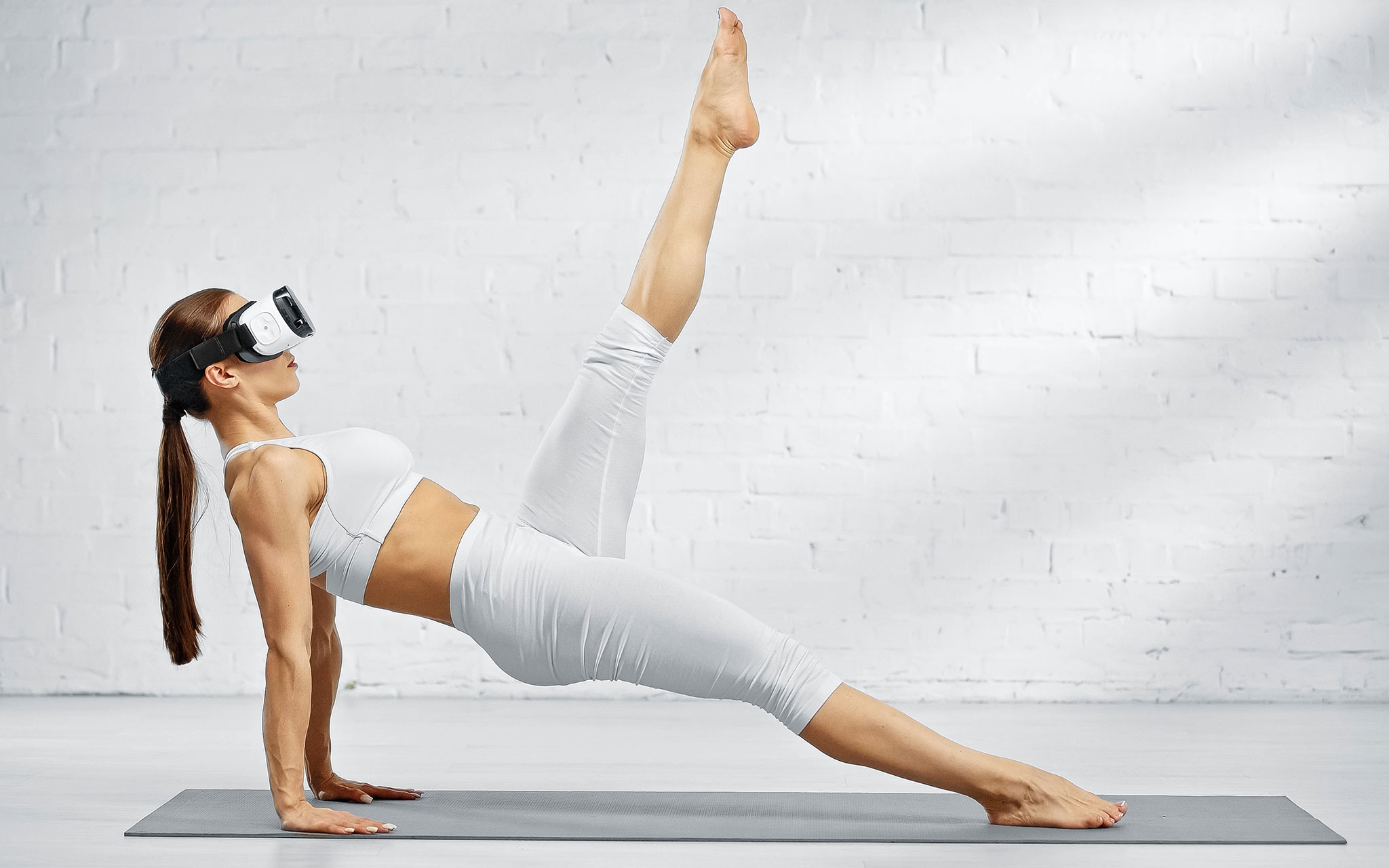The Prevalence of Technology in Modern Life
Let’s discuss something we’re all dealing with: the tech takeover of our lives. Our gadgets are extensions of ourselves – sometimes it’s wonderful, but sometimes it’s a bit much. From smartphones glued to our hands to laptops turning every coffee shop into an office, tech has totally shaken up how we do, well, everything.
Finding balance for mental health and productivity
Is this 24/7 connected life actually working for us?
Spoiler alert: not always.
That’s where the art of tech-life balance comes in. It’s not about going full hermit and ditching your devices. It’s about finding that sweet spot where you’re the boss of your tech, not the other way around.
In this guide, we’re going to learn how to set some boundaries with your beloved gadgets. Whether you feel like a slave to your notifications or just want to remember what your family or friendships look like without a screen in the way, we’ve got you covered.
Ready to take control? Let’s do this!

Understanding Your Relationship with Technology
Before we jump into fixing things, let’s figure out what we’re dealing with. It’s time for a little tech self-reflection. No judgment here – we’re all in the same boat!
Assessing your current device usage
First, let’s get real about your screen time. How many hours are you clocking on your phone, tablet, or computer each day? Which apps are your time-suckers? And be honest – how often do you find yourself mindlessly scrolling when you should be doing, well, anything else?
Now, let’s talk feelings. What makes you reach for your phone? Bored? Lonely? Stressed about work? Understanding these triggers is like unlocking a cheat code for better habits.
Identifying problem areas and triggers
Think about where your tech use might be messing with other parts of your life. Is late-night social media scrolling turning you into a zombie the next day? Is your phone the uninvited guest at family dinners? Does the ‘ping’ of a new email send you into a work-stress spiral, even on weekends?
Don’t worry if you’re not loving what you see – that’s totally normal. The point isn’t to beat yourself up, but to understand your digital habits. Once you know what you’re dealing with, you can start shaking things up. Trust me, future you is going to be so grateful for this little reality check!

The Impact of Excessive Device Use
Let’s face it: our devices can be pretty remarkable, but too much of a good thing can definitely backfire. When we’re glued to our screens 24/7, it starts to mess with our heads and bodies in ways we might not even realise.
Effects on mental health
First up, there’s the mental health hit. Constantly comparing ourselves to those picture-perfect Instagram feeds? Yeah, that’s a one-way ticket to anxiety and depression town. And don’t get me started on the stress of always being “on” and reachable. [1]
Physical health consequences
Physically, we’re not doing ourselves any favours either. Hunching over our phones is giving us “tech neck” (ouch!), and all that blue light before bed is messing with our sleep. Plus, let’s be real – scrolling through TikTok isn’t exactly helping us hit our step goals. [2]
Social and relationship implications
But here’s the kicker: our relationships are taking a hit too. How many times have you been out with friends, only to realise everyone’s nose-deep in their phones? Or even if not nose-deep, constantly distracted by them? Or missed out on quality time with your partner because you were both busy doom-scrolling?
The bottom line? Our devices are tools, not our whole lives. It’s time to find that sweet spot where tech enhances our world instead of consuming it.

Principles of Healthy Tech Boundaries
So, you’re ready to tame the tech beast? Awesome! The key is to think of your relationship with your devices like any other relationship – it needs boundaries to thrive.
Mindful usage vs. mindless scrolling
It’s all about being intentional with your screen time. Instead of zombie-scrolling through your feed, ask yourself, “Why am I picking up my phone right now?” If you don’t have a good answer, maybe it’s time to put it down and find something else to do. [3]
Quality over quantity in digital interactions
Quality over quantity is the name of the game here. A quick, meaningful chat with a friend beats hours of lurking on their social media any day. Try to make your digital interactions count, you know?
The concept of “tech-free” zones and times
Now, let’s talk about “tech-free” zones and times. These are like little oases in your day, where devices are a no-go. Perhaps it’s your bedroom, the dinner table, or the first hour after you wake up. Whatever you choose, these tech-free spaces give your brain a chance to reset and reconnect with the real world.
Remember, it’s not about going full hermit – it’s about finding that sweet spot where tech enhances your life without taking it over.

Practical Strategies for Setting Boundaries
Creating a device usage schedule
Let’s start with creating a device usage schedule. It’s like meal planning, but for your tech diet. Block out specific times for checking emails or scrolling socials, and stick to it. Your brain will thank you for the structure.
Implementing app limits and screen time tracking
App limits are your friend. Most smartphones now have built-in features to cap your time on certain apps. Use them! Set reasonable limits and watch your productivity soar. And hey, if you’re feeling brave, try a screen time tracking app. It might be a wake-up call, but occasionally, we need that, right? [4]
Establishing tech-free routines (e.g., during meals, before bed)
Now, let’s talk about tech-free routines. Meals are a great place to start – make the dinner table a no-phone zone. Your food (and your family) deserve your full attention. And for the love of good sleep, banish devices from your bedtime routine. Try reading a book instead of scrolling – your dreams will be way more interesting than your social media feed, trust me.
Remember, it’s all about baby steps. You don’t have to go cold turkey overnight. Start small, be consistent, and watch how these little changes add up to a major shift in your tech-life balance.

Leveraging Technology to Promote Balance
Funny enough, your devices can actually help you use them less. Ironic, right? But there’s a whole world of apps and tools out there designed to keep your tech habits in check.
Apps and tools for managing screen time
First up, screen time trackers. Most smartphones have these built-in now, but there are also third-party apps that get even more detailed. They’re like a Fitbit for your digital life, showing you exactly where your time’s going. Knowledge is power, people!
Then there are focus apps. These bad boys block distracting sites or apps for set periods. It’s like having a stern but loving digital babysitter. “No, you can’t check Instagram right now. You’re supposed to be working on that report, remember?” [5]
Using technology to enhance productivity and well-being
But tech isn’t just about limiting yourself. There are loads of apps out there for meditation, fitness, and productivity that can actually enhance your wellbeing. The key is finding the right ones for you.
And don’t forget about good old-fashioned settings. Tweaking your notifications can be a game-changer. Do you really need to know every time someone likes your tweet?
The trick is to make technology work for you, not the other way around. Use these tools to create a digital environment that helps you thrive, both online and off.

Overcoming Challenges
Dealing with FOMO (Fear of Missing Out)
First up, the dreaded FOMO – Fear of Missing Out. It’s that nagging feeling that the moment you put down your phone, something epic is happening without you. News flash: it probably isn’t. Try reframing it as JOMO – Joy of Missing Out. There’s a certain peace in not knowing every little thing happening in the world, you know? [6]
Managing work-related technology demands
Work can be a tricky one, especially if you’re expected to be “always on.” Have a chat with your boss about expectations. Maybe you can set “office hours” for responding to work messages. You might be surprised how understanding people can be when you set clear boundaries.
Navigating social expectations around device use
Then there’s the social pressure. Everyone’s got that friend who gets annoyed if you don’t reply to texts instantly. It’s okay to let them know you’re not always glued to your phone. Real friends will get it, promise.
Remember, it’s not about perfection. You’ll have days when you slip up, and that’s totally fine. The goal is progress, not perfection. Keep at it, and soon enough, these new habits will feel as natural as reaching for your phone used to be.

Cultivating Offline Activities and Relationships
Rediscovering non-digital hobbies and interests
Remember hobbies? Those things we used to do before we had smartphones? It’s time for a comeback tour. Dust off that guitar, break out the paintbrushes, or lace up those running shoes. Rediscovering old passions or picking up new ones can be a total game-changer for your tech-life balance.
And hey, why not make it social? Invite friends over for a board game night or start a book club. Or spend some time in nature with your family. There’s something magical about face-to-face interaction that even the best video call can’t replicate. Plus, it’s way harder to check your phone when you’re trying to keep your Jenga tower from toppling over.
Strengthening in-person connections
Speaking of friends, nurturing those in-person connections is key. Make a point to meet regularly, sans devices. Go for coffee, take a walk in the park, or try that new escape room in town. Quality time without digital distractions can seriously deepen your relationships. [7]
Don’t forget about solo offline time too. Whether it’s meditation, journaling, or just sitting in nature, giving your brain a break from constant stimulation can be seriously refreshing.
The goal isn’t to become a digital hermit – it’s about finding that sweet spot where tech enhances your life without dominating it. Trust me, your offline self will thank you.

Teaching Tech Balance to Others
So, you’ve got this tech-life balance thing down. Awesome! Now it’s time to spread the love. But here’s the thing: nobody likes a preachy preacher. The best way to influence others? Lead by example.
Modelling healthy habits for children and peers
When you’re hanging out with friends or family, be present. Put that phone away and give them your full attention. You’d be surprised how contagious good habits can be. Before you know it, they might start following suit.
Do you have kids? This is where it gets real. Little ones are like sponges, soaking up our habits — good and bad. Set clear guidelines for device use at home. Maybe have a charging station away from bedrooms, or declare dinner time a no-phone zone. And don’t forget to practice what you preach! [8]
Creating a supportive environment for tech-life balance
Creating a supportive environment is key. Make your home a place where offline activities are just as exciting as screen time. Board games, craft supplies, books: have them easily accessible.
And hey, why not start a friendly challenge with your buddies? See who can reduce their screen time the most in a week. Nothing like a little competition to get people motivated!
Remember, change doesn’t happen overnight. Be patient, keep it positive, and celebrate small wins. Before you know it, you’ll have a whole crew of tech-balanced buddies.

Conclusion
The ongoing nature of maintaining tech-life balance
So, here’s the deal: achieving tech-life balance isn’t a one-and-done thing. It’s more like a lifelong dance, and occasionally, you might step on your own toes. That’s totally okay! The key is to keep moving and adjusting your steps as needed.
Remember, we’re not casting technology as a villain here. Our devices can be pretty wonderful when used right. It’s all about finding that sweet spot where tech enhances your life without taking it over.
As you go forward, be kind to yourself. There will be days when you nail it, and others when you fall into a three-hour TikTok hole. It happens to the best of us. The important thing is to keep coming back to your goals and boundaries.
Encouragement for readers to start their journey towards a healthier relationship with technology
Stay curious and keep experimenting with what works for you. Maybe a digital detox weekend does wonders, or perhaps you thrive with strict app time limits. Your perfect balance might look different from someone else’s. There are no hard and fast rules.
The payoff? More time for the people and passions that really matter, better sleep, less stress, and the satisfaction of knowing you’re the boss of your devices, not the other way around.
Take charge of your tech-life balance. You’ve got this!
References
- Twenge JM, Campbell WK. Media Use Is Linked to Lower Psychological Well-Being: Evidence from Three Datasets. Psychiatr Q. 2019 Jun;90(2):311-331. doi: 10.1007/s11126-019-09630-7. PMID: 30859387. ↩
- Kim J, Hwang Y, Kang S, Kim M, Kim TS, Kim J, Seo J, Ahn H, Yoon S, Yun JP, Lee YL, Ham H, Yu HG, Park SK. Association between Exposure to Smartphones and Ocular Health in Adolescents. Ophthalmic Epidemiol. 2016 Aug;23(4):269-76. doi: 10.3109/09286586.2015.1136652. Epub 2016 Jun 2. PMID: 27254040. ↩
- Meynadier, Jai & Malouff, John & Loi, Natasha. (2023). Lower Mindfulness is Associated with Problematic Social Media Use: A Meta-Analysis. Current Psychology. 43. 1-10. 10.1007/s12144-023-04587-0. ↩
- Felisoni, D. D., & Godoi, A. S. (2018). Cell phone usage and academic performance: An experiment. Computers & Education, 117, 175-187. ↩
- Bakker, D., Kazantzis, N., Rickwood, D., & Rickard, N. (2016). Mental health smartphone apps: Review and evidence-based recommendations for future developments. JMIR Mental Health, 3(1), e7. ↩
- Przybylski, A. K., Murayama, K., DeHaan, C. R., & Gladwell, V. (2013). Motivational, emotional, and behavioral correlates of fear of missing out. Computers in Human Behavior, 29(4), 1841-1848. ↩
- Sherman, L. E., Michikyan, M., & Greenfield, P. M. (2013). The effects of text, audio, video, and in-person communication on bonding between friends. Cyberpsychology: Journal of Psychosocial Research on Cyberspace, 7(2). ↩
- Lauricella, A. R., Wartella, E., & Rideout, V. J. (2015). Young children’s screen time: The complex role of parent and child factors. Journal of Applied Developmental Psychology, 36, 11-17. ↩

Leave a Reply